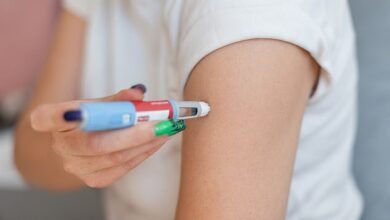The Truth About Cell Phones and Brain Tumor Link, According to Major World Health Organization Study


A World Health Organization study on brain tumors and cell phone use has found no link between the two.
For decades, there has been concern about the radiation emitted by mobile devices. In 2011, the WHO cancer agency even labeled the radiation as potentially carcinogenic to humans.
But the new research, based on dozens of studies dating back to 1994, found no link between cell phone use and cancer, even among people who talk on the phone or use their smartphones all day.
Ken Karipidis, one of the study’s lead authors, said the results are “very reassuring,” especially given that mobile phone use has “exploded.”

A World Health Organization study of brain tumors and cell phone use found no link between the two (file)
Karipidis, who works for the Australian Radiation and Nuclear Protection Authority, added: “There has been no increase in the number of brain tumour cases.”
The panel of experts examined whether there is a link between brain and salivary gland cancer and leukemia, and exposure to radio waves widely used in wireless technology such as cell phones, TVs and baby monitors.
The final analysis included 63 studies from 1994-2022, reviewed by 11 researchers from 10 countries, including the Australian Government’s Radiation Protection Authority.
The study found that despite the dramatic increase in the use of wireless technology, there has not been an equivalent increase in the number of cancer cases.
This was even true for people who often have long phone conversations or who have been using a mobile phone for more than ten years.
Co-author Mark Elwood, professor of cancer epidemiology at the University of Auckland, New Zealand, said: ‘None of the key questions examined showed an increased risk,’ he said.
The review follows other similar work. The WHO and other international health organizations have previously said there is no definitive evidence of harmful health effects from the radiation used by mobile phones, but called for more research.
It is currently classified as ‘possibly carcinogenic’, or class 2B, by the International Agency for Research on Cancer (IARC), the WHO’s cancer agency.
The category used when the agency cannot rule out a possible connection. This also includes other common products such as talcum powder and aloe vera.
The WHO advisory group has called for the classification of wireless radiation to be re-evaluated as soon as possible, given new data since the last assessment in 2011.
The WHO assessment will be published in the first quarter of next year.
Previous research has shown that cell phone radiation can lead to brain tumors, but Karipidis said those initial studies were flawed.
For example, some studies have relied on case-control studies, comparing the responses of people with brain tumors with those of people without the disease.
This may lead to bias, as people with brain tumors “tend to overestimate their exposure.” said Karipidis.




